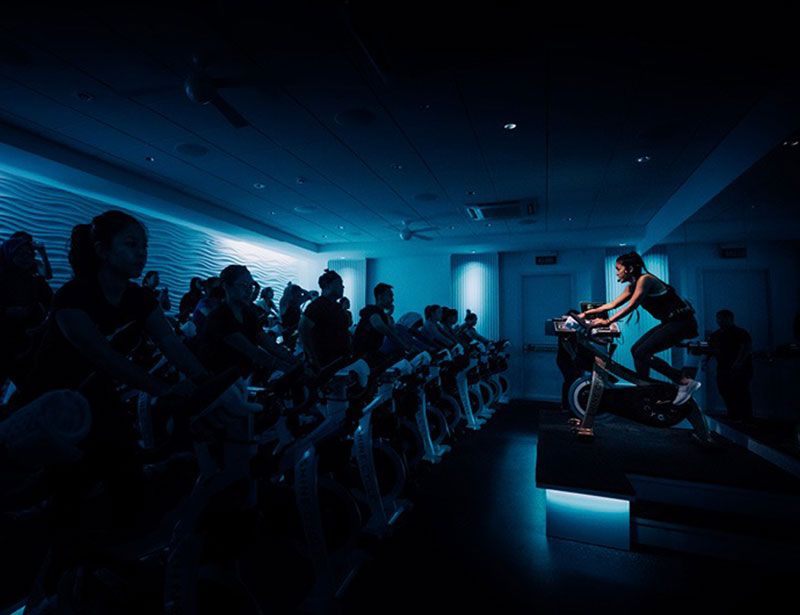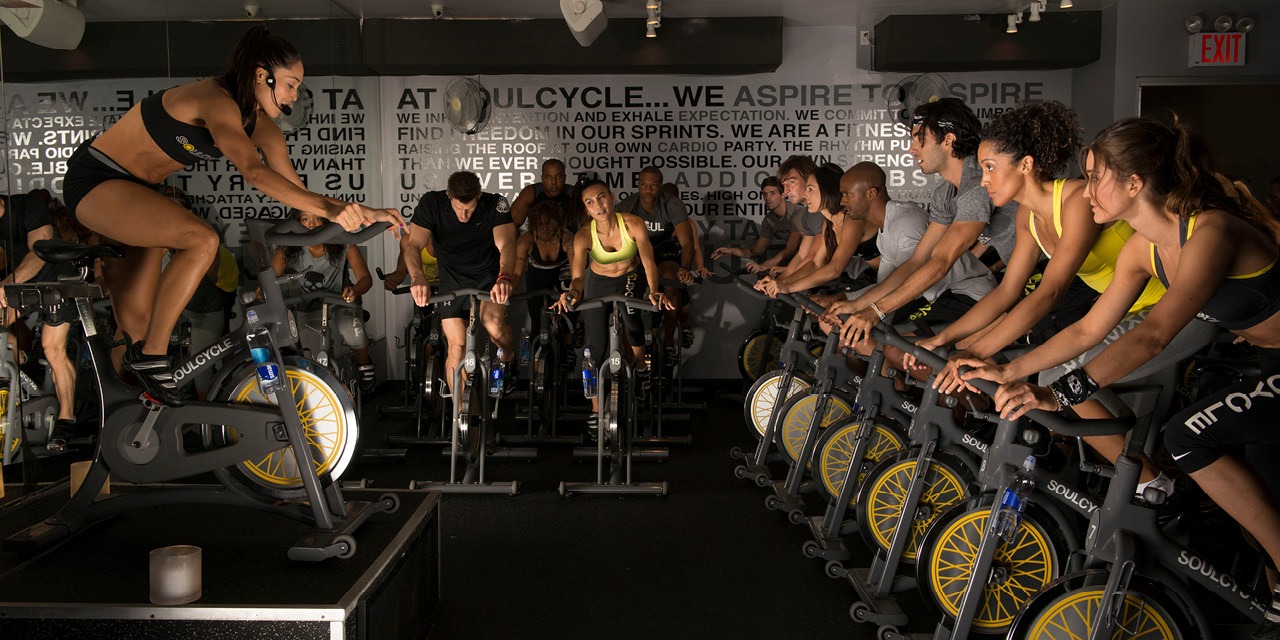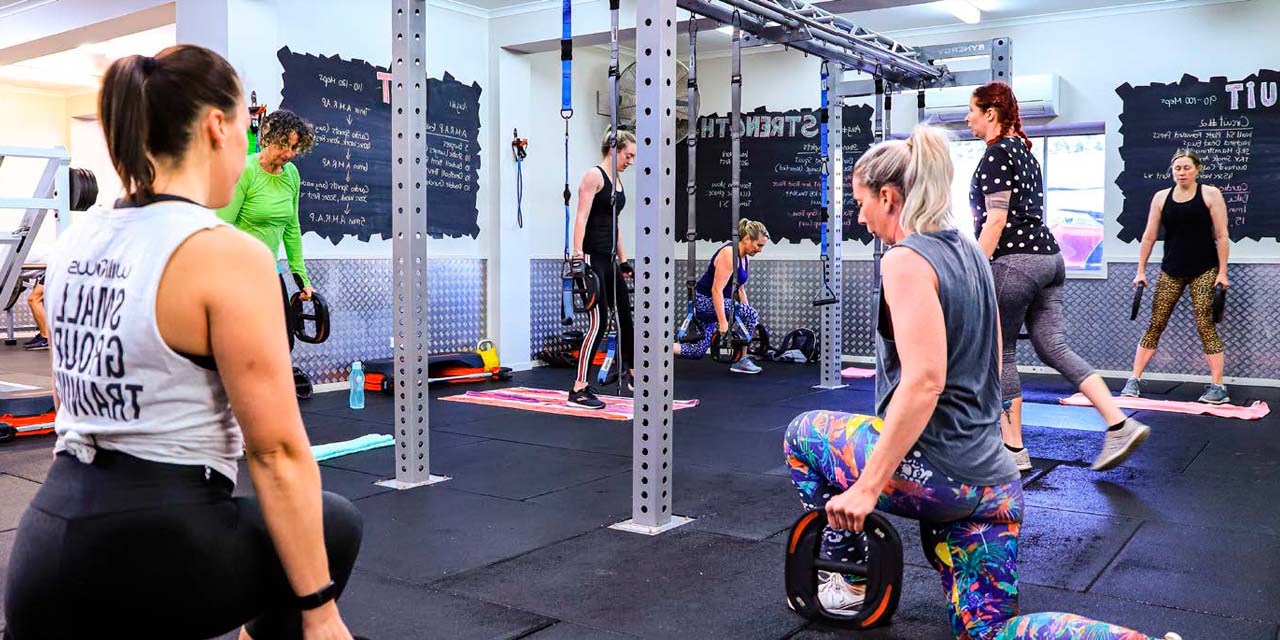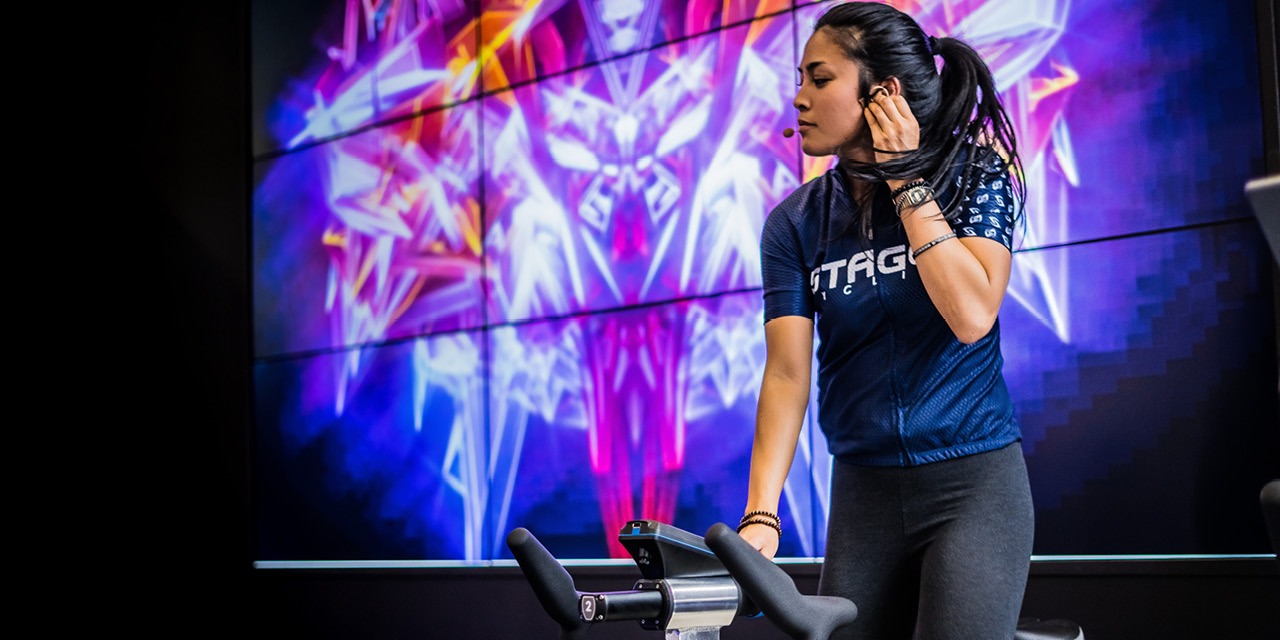Indoor cycling trends
Artificial intelligence. Real results.

When you hear the term AI (artificial intelligence), what does it conjure up in your mind?
Do you imagine it to be something futuristic: technology that will one day power world-dominating robots, self-driving cars and so on?
You certainly wouldn’t be alone in this view, but to pigeonhole AI as something for the future is to miss out on the very real opportunities it presents to gym and studio operators today.
AI is, after all, a significant force in our lives already: from deciding what we need to see in our news feed, to suggesting an artist we may want to play, to giving us to-the-minute arrival times in navigation apps, it touches us in myriad different ways every day. Its role and reach will continue to grow, but we are – all of us – already reaping its benefits in the shape of enhanced, more personalised experiences throughout our daily lives.
So, what does this mean in a fitness context?
When you look at the new entrants to our sector, whether they be existing tech players like Apple or the likes of Peloton, you can be assured of this: AI is at the heart of their product development, customer experience and business operations.
It can, and should, be at the heart of yours too.
The data already exists in your business to improve your offering in a multitude of ways
Let AI do the heavy lifting
The starting point is data, but don’t allow this statement to set alarm bells ringing.
You may have been told that AI isn’t something our sector will be able to take advantage of due to shortcomings in operators’ data. This is, however, fundamentally untrue: I can say with confidence that the data already exists in your business to improve and refine your offering in a multitude of ways.
Indeed, from our conversations with more than 100 club operators around the world in the last 18 months, without exception the data they needed to transform their businesses – from personalisation of the member journey, to increased secondary spend, to better targeted products and services – was already there.

You would be amazed at what can be done with incomplete datasets, too: it’s now entirely possible to clean and enhance them, filling gaps and making them fit for purpose.
By then applying today’s powerful AI and machine learning tools to this customer data, you’ll unveil a level of insight that, in many cases,makes it blindingly obvious where improvements can be made and opportunities taken.
Let’s take a look at some specific examples of how this can be used to transform your indoor cycling offering.
Schedule for retention
How do you currently design your class timetable? Most likely it’s based on a combination of peak times, typical attendance levels and instructor availability. And that makes sense – these are important variables. But they aren’t the only variables; you’re unlikely to maximise member satisfaction if you schedule based on these factors alone.
For example, did you know that even a consistently well-attended class might nevertheless be a cause of member attrition? This was the surprise learning for one of our clients, who found that its always-full HIIT classes were a common factor among members leaving the club. On closer inspection, the HIIT classes were attracting lots of new members, lured by the promise of quick results but then quickly put off when the workout was too hard for them.
AI works through millions of scenarios to create an optimised timetable for member retention
And that’s just one example; your typical timetable will be full of such considerations, as well as other far less obvious ones. In short, there are so many variables at play that optimal scheduling isn’t a task a human can undertake.
Instead, plug your member data and your class schedule into an AI platform and it will work through millions of possible scenarios to create an optimised timetable for the satisfaction and retention of your members. Here’s how it works.
• Your AI sees member and class attendance and the schedules you have in place.
• It also understands the drivers behind your member retention performance in quite literally a million different ways.
• You ask your AI to optimise your class timetable for member retention.
• Your AI will take into account every variable and generate new timetables.
• With each variation, it will provide you with the expected retention improvement from implementation, allowing you to optimise the schedules for member satisfaction.

The changes might not be dramatic: minor tweaks in start time, dropping from three to two classes on a Saturday morning, flipping from two classes on a Monday to four on a Friday. The point is, the AI will have looked at every single permutation – assessing the impact of each possible variation on the retention of every single one of your members – to arrive at the optimal schedule.
Of course, even this AI-generated timetable won’t tick every box for every member: you will still have people complaining about changes that don’t suit them. The key is not to be swayed by the vocal few. Powered by AI, you can move ahead confident in the knowledge that your timetable is the best possible fit for the majority of your membership.

Incidentally, AI will also be able to tell you which of your members are likely to feel aggrieved at the schedule changes, allowing your GM to put in a few pre-emptive calls to let them know what’s happening, apologise for any inconvenience and offer them a free smoothie next time they’re at the club.
Understand instructor performance
Instructor performance is another significant factor in member retention, and once again AI can provide you with actionable insight. Our system always models to the individual member, before scaling up to a statistically significant level to see where specific factors – a particular instructor, for example – are contributing to retention or attrition. By looking at what all the members have in common, we can identify human issues with a high degree of accuracy.
ONE CUSTOMER GREW NON-DUES REVENUE BY 43 PER CENT IN THE SPACE OF JUST SIX MONTHS
It allows single-site operators to compare the performance of the various instructors delivering the same class format, or a multi-site operator to understand why the same class might be driving very different retention levels at different clubs.
And the issues might not be where you expect: we’ve witnessed one personal training example where the club’s highest performing PT in revenue terms was in fact contributing to member attrition, while a lower-performing PT in revenue terms was driving retention. Armed with this understanding, you can take the appropriate actions, whether that’s staff training to plug skill gaps or changing your instructor line-up.

Maximise class sales
At face value, the following example is primarily of value to boutique operators and/or those who sell pay-as-you-go class packages. Even if that isn’t you, though, do keep reading, because the use case is sufficiently flexible to encompass many different areas, from the sale of class packs to personal training to discounted multi-packs of massages or smoothies.
Say you offer your cycling classes for purchase as individual sessions, or in packs of five or 10. Your AI can first identify the individuals from your database who will purchase from you. It can then segment them further into those most likely to purchase each of the particular packs.
Andrew would buy a five-pack, but he’s just as likely to purchase a 10-pack, so serve him that offer. Cathy, meanwhile, is highly unlikely to want anything but a single session, so don’t scare her off with a five-pack offer. Bank the one-session sale.
Add automation and you have AI working 24 hours a day, seven days a week to find customers who would be receptive to an offer, before serving them with the correct one in a piece of communication that at the very least is relevant to their age and gender, and delivered in the optimal engagement format for them. It ensures you aren’t leaving any potential revenue on the table, and it’s all achieved with no human intervention.
The potential is massive: one customer adopted this approach for non-dues revenue among its membership and grew it by 43 per cent in the space of just six months.
Attract high-value customers
A similar approach can shape the way you target and talk to prospects, too.
Once your AI has built up a picture of your ideal customer – the customer who will buy a 10-pack of classes every month, who recommends their friends, who has a juice on most visits, but above all who stays with you the longest, with the highest lifetime value – it also knows the factors that underpin this: everything from their age to the classes they do to the source through which they first came to you.
YOUR COST OF ACQUISITION WILL BE REDUCED, YOUR CONVERSION RATE HIGHER, AND YOUR CONVERSION COST LOWER
And this is invaluable in your marketing efforts. Let’s take Facebook advertising as an example. Your AI will use the above insights to create what Facebook calls a custom audience. In turn, this ensures your ad is served only to those who look very similar to your best customers, helping you attract high-value customers. Your cost of acquisition is reduced, too, because you only pay Facebook for a very specific type of person; in our experience, you might get fewer clicks, but your conversion rate will be higher – and your conversion cost lower.

Maximise yield per member
The potential here is perhaps best explained by putting the spotlight on a client of ours – an Australian operator that, by running an upsell campaign underpinned by AI, recorded its best ever result: an impressive A$35,000 of additional revenue generated in just three weeks.
With different memberships available at the club – a standard fitness membership, but also studio memberships that included premium classes – the campaign focused on those in its fitness membership who took part in classes such as yoga, where the premium membership would offer strength in depth. There were other variables too: recipients were selected by AI based on length of membership, frequency, likes, age profile, risk profile and so on. They were then presented with a personalised offer in an email that – worded and designed in such a way that made them feel the club genuinely knew them and what they wanted – enjoyed an incredible 85 per cent open rate. Around 60 per cent of those contacted went on to make some sort of upgrade, with A$35,000 the instant result.
ASK YOUR AI TO CREATE AN AVATAR OF YOUR CYCLING AVATAR OF YOUR CYCLING AND FIND OTHERS WHO MATCH THAT PROFILE
It’s easy to see how this approach could be used to maximise secondary spend, too. Imagine a scenario in which AI has segmented your indoor cycling enthusiasts to give you such a deep understanding of who they are that selling cycling apparel, post-workout nutrition, even cycling-based PT or outdoor cycling days becomes almost effortless, because you’re offering them exactly what they want. You can even present different commercial offers based on different probability of purchase, which again AI can tell you.
Create new cycling fans
This same approach can be used to attract new people to indoor cycling. Ask your AI to create an avatar of your cycling class participants. Who are they really – not just their age or gender but their other interests in the club, their length of time as a member, the sales channel through which they joined you in the first place; there will be factors in common that might surprise you.
Armed with this knowledge, your AI can then search your entire database to find other members who haven’t taken part in your group cycling classes thus far, but who – based on historical behaviours among your membership – are likely to give it a try if given a compelling nudge. All you need to do is work out what to say to them, and input appropriate imagery for each profile, then let AI do the rest. Cue more members finding new passions that will further bond them to your club.

Hold on to your members
And all of this is before we even start on AI’s ability to very accurately tell you, from one day to the next and wherever they are in their contract with you, each of your members’ likelihood of staying with you at their next opportunity to make that choice.
Rather than trying to win members back round at the point of leaving – an almost impossible task – it allows you to predict and get ahead of the risk, developing personalised, proactive strategies and interventions. And the impact? Our clients are improving member retention in as little as 30 days.
Put simply, AI is no futuristic tool. All of these opportunities exist now. It comes down to what action you choose to take.

About the author
Ian Mullane is founder and CEO of Keepme. ai, the AI-based platform which provides next-generation sales and marketing for fitness operators, driving revenues by tur-bo-charging member acquisition, retention and re-engagement. Ian will be speaking at this year’s European Health & Fitness Forum, which takes place on 3 November 2021. In the meantime, read more about AI in Ian’s thought-provoking white paper, available for free download now: The Fitness Future: Rules of Engagement

Conceived, powered and funded by BODY BIKE®, RIDE HIGH has a simple mission: to celebrate and champion the very best of indoor cycling, sharing ideas, stories and experiences from around the world to inspire the sector on to even bigger and better things. Subscribe for free by leaving your details below and we'll send indoor cycling's hottest news direct to your inbox three times a year.






